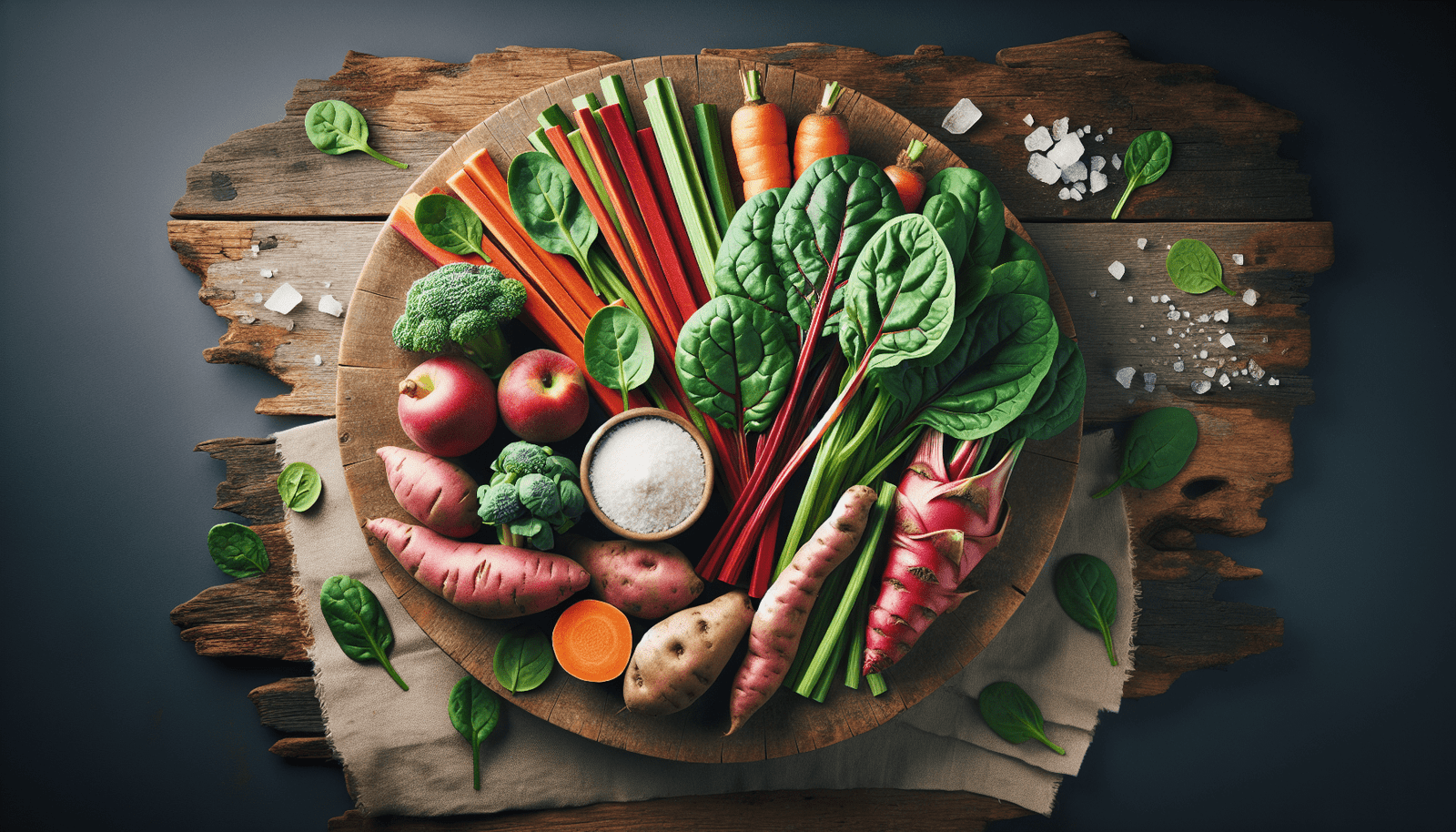Have you ever wondered how the foods you eat might be impacting your health, especially when it comes to mysterious compounds like oxalates? This is a question that piques curiosity because, surprisingly, oxalates are compounds that are present in many of the foods you consume daily. They are largely overlooked despite their significant effects on your body, particularly on your health. Let’s delve into the intriguing world of oxalates and examine whether they can indeed be measured in foods.
What Are Oxalates?
Oxalates, also known as oxalic acid, are naturally occurring molecules found in plants, animals, and humans. These compounds have two negatively charged oxygen atoms bonded to a carbon atom. Simple enough chemistry, right? In dietary terms, oxalates are significant because they can bind to minerals like calcium, iron, and magnesium, forming compounds that your body finds challenging to absorb. This means if your diet is rich in oxalate-containing foods, your body might not be able to utilize these essential minerals efficiently.
Why Do Oxalates Matter?
Perhaps the most critical reason oxalates matter is their potential role in forming kidney stones. When oxalates bind with calcium in your kidneys, they can form crystals. If these crystals grow large enough, they may develop into painful kidney stones. Furthermore, oxalates can impact your digestion and overall absorption of essential nutrients, which could lead to deficiencies if your diet is not balanced.
Foods High in Oxalates
A myriad of foods contain oxalates, and they vary widely in concentration. Unfortunately, it’s not just the foods you expect to be problematic that may contain high levels of oxalates. While leafy greens like spinach are infamous for their oxalate content, other foods such as nuts, seeds, chocolate, and certain fruits also contain these compounds.
Common High-Oxalate Foods
For reference, let’s break down some common high-oxalate foods:
| High-Oxalate Foods | Oxalate Content (mg/100g) |
|---|---|
| Spinach | 750 |
| Rhubarb | 700 |
| Beets | 610 |
| Nuts (Almonds, Cashews) | 150-470 |
| Chocolate | 150 |
It’s important to note that these values can vary depending on the method of preparation and serving size. So, keeping an informed approach can guide you in making better food choices, especially if you’re prone to kidney stones or nutrient malabsorption.
Can Oxalates Be Measured in Foods?
The burning question you’ve been waiting for an answer to is whether oxalates in foods can be quantified. The good news is yes, oxalates can indeed be measured. Yet, the process is complex, involving various scientific techniques to capture the exact content in foods.
Methods for Measuring Oxalates
Here, let’s explore some of the current methodologies that help measure oxalates in foods:
-
Enzymatic Tests: This involves using enzymes to react with oxalates in foods to produce measurable by-products.
-
Colorimetric Assays: These tests rely on color changes that occur when oxalates react with certain chemicals, providing a visual cue that can be measured.
-
High Performance Liquid Chromatography (HPLC): A more advanced method that separates oxalates from other compounds in a liquid extract. It is highly accurate and considered a gold standard in research settings.
Each technique varies in complexity, cost, and accuracy. Enzymatic tests and colorimetric assays are quicker and easier, but HPLC provides precision that is invaluable, especially in research and detailed nutritional assessments.
Variables in Oxalate Measurement
It’s noteworthy that several factors can impact the accuracy of measuring oxalates in foods. From natural variability within the same type of food to differences in cultivation and preparation, these elements must be considered when interpreting oxalate content.
Natural Variabilities
Many times, factors such as soil quality, genetic differences in plant species, and even the water content of the plant can affect oxalate levels. Just like you and I are unique individuals, every plant is also unique, even if it’s the same type of vegetable. This variability makes it tricky to provide a universal oxalate content for any given food.
Preparation Methods
Cooking, boiling, or steaming foods can reduce oxalate levels. These cooking processes help release oxalates from the food, especially when the oxalates are water-soluble. For example, boiling spinach and then discarding the water can significantly decrease its oxalate content. Understanding how preparation impacts a nutrient’s presence can guide you in reducing oxalate consumption while still enjoying these healthy foods.
Oxalates and Your Health
The impact of oxalates on your health is nuanced and dependent on individual susceptibilities. While not a concern for everyone, for some, mainly those susceptible to kidney stones or nutrient deficiencies, understanding oxalate consumption is crucial.
Risks Associated with High Oxalate Diets
High oxalate levels can contribute to kidney stone formation, and for people susceptible to this condition, it can be a lifelong issue. Studies have suggested a possible link between high dietary oxalate and the development of this painful condition. Additionally, if your body does not absorb minerals efficiently due to oxalates binding them, there is an increased risk of deficiencies, leading to potential bone health issues, anemia, and even fatigue.
Tailoring Your Diet for Optimal Health
If you find yourself at risk, working with a dietitian or healthcare professional to tailor a diet that fits your nutritional needs can help manage oxalate levels. Different strategies might include dietary adjustments like reducing high-oxalate foods, increasing calcium intake (which can help bind oxalates before they enter your kidneys), and ensuring adequate hydration.
How to Reduce Oxalate Intake in Your Diet
The mentioning of reducing does not mean avoiding altogether unless your healthcare provider specifically advises otherwise. It’s all about balance and making informed food choices.
Smart Dietary Swaps
For instance, if spinach salads have been your staple, consider swapping spinach for lower-oxalate greens like kale or collard greens. Similarly, if you’re nuts about nuts, particularly almonds and cashews, experiment with sunflower seeds or peanuts, which have lower oxalate levels.
Cooking Techniques
Employ cooking techniques that help lower oxalate content. Boiling vegetables and discarding the water they were cooked in can substantially reduce the oxalate levels found in foods like potatoes, carrots, and in particular, spinach. It’s an effective yet simple method to manage your dietary oxalate intake.

Conclusion: Understanding Oxalates and You
So, can oxalates be measured in foods? Absolutely, yes. And while the technicalities of measuring these compounds involve sophisticated lab techniques, becoming aware of which foods are high in oxalates and how they impact your health is crucial. Knowledge of your body’s response to certain foods and nutrients will empower you to make conscious, health-positive dietary decisions.
By turning oxalate content information into action—whether that involves modifying your cooking methods, choosing different ingredients, or consulting with a dietary expert—you can wield control over your nutritional intake. While oxalates themselves are just one piece of the broader dietary puzzle, understanding their role and measurement adds a layer of awareness that can enhance your wellness journey.
Remember, moderation and balance are key principles of a healthy relationship with food, and knowing the intricate details behind your meals can reassure you that you’re making well-informed choices for you and your body.




